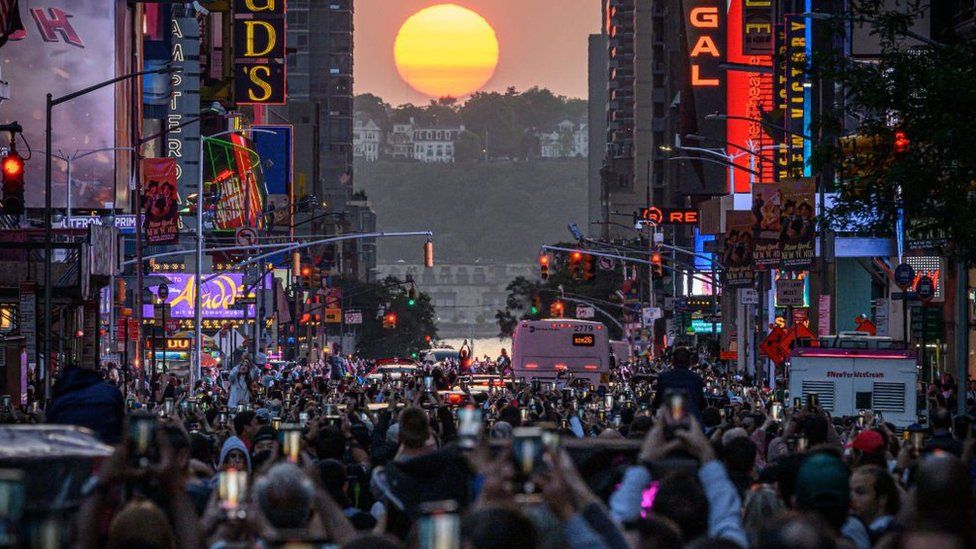
New Yorkers congregated on Tuesday evening to witness the biannual phenomenon of Manhattanhenge. The city’s renowned grid system beautifully framed the setting sun, casting a warm glow over the urban landscape. This captivating event attracts a multitude of spectators, both tourists and locals, who eagerly strive to capture the perfect photograph.
The first occurrence of Manhattanhenge took place on Monday, albeit with only half of the setting sun visible. On Tuesday, the full sun was splendidly showcased between the towering skyscrapers during sunset. The upcoming opportunities to experience this spectacle will be in July, when the sunset impeccably aligns with Manhattan’s street grid layout.
Similar “henge” phenomena can be observed in other cities boasting tall skyscrapers and long straight streets, such as Chicago, Montreal, and Toronto. These events occur in May and July, with two nights dedicated to each occurrence. Additionally, there is a sunrise version during winter.
Manhattanhenge takes place approximately three weeks before and after the summer solstice. Renowned astrophysicist Neil deGrasse Tyson coined the term “Manhattanhenge” in 1997, drawing inspiration from the alignment of the sun with concentric circles of vertical stones at Stonehenge during the solstices.
Tyson reminisces, “As a child, I visited Stonehenge in the Salisbury Plain of England and conducted research on other stone monuments across the British Isles. It left a deep impression on me. I was fascinated by the emotional impact that terrestrial alignments with the Sun can have on a culture or civilization.”
The upcoming Manhattanhenge dates are July 12th at 20:20 and July 13th at 20:21, local time. Spectators situated between 14th Street and 155th Street can witness this captivating event. The New York City Department of Parks and Recreation recommends specific streets, including 57th Street, 42nd Street, 34th Street, 23rd Street, and 14th Street, for optimal viewing. Although 42nd Street is a popular location, any east-west street will generally offer a good view, with the recommendation to venture as far east as possible.
Picture Courtesy: Google/images are subject to copyright









